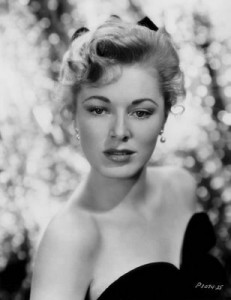
— David DeWitt
Hello,
I just thought you might be interested in this article if you haven’t seen it already.
Caren
GlamAmor
— David DeWitt
Andrew Abrahams writes to us:
Hi!
I wonder whether I can draw your attention to a sale of autographs to be held at Fraser’s Autographs, the leading autograph and memorabilia in the UK, on December 12th, commencing at 5pm London time.
Lot 61 (shown on page 9 of the catalogue) is a collection of 28 10”x8” stills, portraits and crew photographs from the classic 1950s TV series, “The Errol Flynn Theatre”, which was filmed at Bray Studios in England (the home of Hammer Horror).
The collection includes a signed and inscribed photograph (an illustration shown in the catalogue), which I believe shows Errol Flynn with his co-star in that particular episodes, his former wife Patrice Wymore Flynn. Another still shows his son, Sean Flynn, who appeared in another episode.
The Errol Flynn Theatre lot 61
I would be grateful if you would make this information available to anyone you know who may have an interest in this rare package.
Many thanks,
Andrew Abrahams
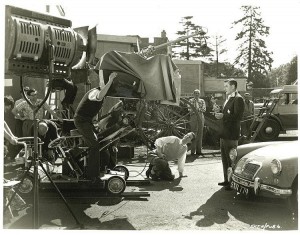
— David DeWitt
Our friend Stefan Koldehoff writes to us:
Dear David, maybe it’s interesting for you to know that the Van Gogh Painting that Errol Flynn once owned will be offered at Sotheby’s London on 5 February 2014.
I am attaching the catalogue text.
Best wishes –
Stefan Koldehoff.

—–
VINCENT VAN GOGH
1853 – 1890
L’HOMME EST EN MER
oil on canvas
66 by 51cm. / 26 by 20in.
Painted in Saint-Rémy in October 1889.
PROVENANCE:
Dr Paul Gachet, Auvers-sur-Oise
Paul Gachet fils, Auvers-sur-Oise (by descent from the above)
Paul Cassirer, Amsterdam & Paul Graupe, Germany & New York (acquired from the above on 30th May 1939)
Caesar R. Diorio, New York (acquired from the above on 7th July 1943)
Errol Flynn, United States (acquired from the above by 1944)
Acquavella Galleries, Inc., New York
John T. Dorrance, Jr., Philadelphia (acquired from the above in 1964. Sold: Sotheby’s, New York, The Collection of John T. Dorrance, Jr., 18th October 1989, lot 27)
Acquired by the present owner in 1993
EXHIBITED:
Paris, Salon des Indépendants, Vincent van Gogh, 1905, no. 22, illustrated in the catalogue
LITERATURE:
Louis Piérard, The Tragic Life of Vincent van Gogh, London, 1925, illustrated p. 11 Jacob-Baart de la Faille, L’Œuvre de Vincent van Gogh, catalogue raisonné, Paris & Brussels, 1928, vol. I, no. 644, catalogued p. 182; vol. II, no. 644, illustrated pl. CLXXVI
Florent Fels, Vincent van Gogh, Paris, 1928, illustrated p. 83 (titled L’Atre)
Willem Scherjon & W. Jos de Gruyter, Vincent van Gogh’s Great Period – Arles, St. Rémy and Auvers sur Oise (Complete Catalogue), Amsterdam, 1937, St. Rémy no. 86, illustrated p. 280 (titled Seated Woman with Child)
Jacob-Baart de la Faille, Vincent van Gogh, Paris, 1939, no. F.644, fig. 654, illustrated p. 451
Georg Schmidt, Van Gogh, Bern, 1947, no. 40, illustrated
The Complete Letters of Vincent van Gogh, London, 1958, vol. III, letter no. 610, mentioned p. 223
Fritz Novotny, ‘Die Bilder van Goghs nach fremden Vorbildern’, in Festschrift Kurt Badt, Berlin, 1961, pp. 213-230
Jacob-Baart de la Faille, The Works of Vincent van Gogh, His Paintings and Drawings, Amsterdam, 1970, no. F644, illustrated p. 257
Paolo Lecaldano, Tout l’œuvre peint de Van Gogh, Paris, 1971, no. 705, illustrated p. 221
Jacques Lassaigne, Van Gogh, Paris, 1974, illustrated in colour p. 60 (image inverted)
Jan Hulsker, The Complete van Gogh: Paintings, Drawings, Sketches, New York, 1984, no. 1805, illustrated p. 416 (titled Woman with Baby, Sitting at the Fireside)
Ronald Pickvance, Van Gogh in Saint-Rémy and Auvers (exhibition catalogue), The Metropolitan Museum of Art, New York, 1986-87, illustrated p. 48
Jan Hulsker, The New Complete Van Gogh: Paintings, Drawings, Sketches, Amsterdam & Philadelphia, 1996, no. 1805, illustrated p. 416 (titled Woman with Baby, Sitting at the Fireside)
Cornelia Homburg, The Copy Turns Original: Vincent van Gogh and a New Approach to Traditional Art Practice, Amsterdam & Philadelphia, 1996, no. 50, illustrated
Ingo F. Walther & Rainer Metzger, Vincent van Gogh: The Complete Paintings, Cologne, 2001, illustrated in colour p. 552
Chris Stolwijk, Sjraar van Heugten, Leo Jansen & Andreas Blühm (eds.), Vincent’s Choice: Van Gogh’s Musée Imaginaire, London, 2003, mentioned p. 102
Marije Vellekoop & Roelie Zwikker, Vincent van Gogh: Drawings, Amsterdam, 2007, vol. 4, no. 446b, illustrated in colour p. 390
Leo Jansen, Hans Luijten & Nienke Bakker (eds.), Vincent van Gogh: The Letters, London, 2009, vol. 5, illustrated in colour p. 120 (titled The Husband is at Sea); letter 810, mentioned p. 120
Walter Feilchenfeldt, Vincent van Gogh: die Gemälde 1886-1890. Händler, Sammler, Ausstellungen, die frühen Provenienzen, Wädenswil, 2009, mentioned p. 190
Painted at Saint-Rémy in October 1889, Van Gogh’s haunting depiction of a young mother, pining for her husband away at sea, is a brilliant example of the artist’s transformative vision of a time-honoured subject. Van Gogh arrived at the asylum in Saint-Rémy in May 1889, and during the following months produced some of his most celebrated masterpieces, including The Starry Night. His work of this period is notable for the bright, shimmering palette, and the present work displays his favourite tonal contrasts used in a number of other works executed around this time (fig. 1). In L’Homme est en merthe warm yellow and ochre hues of the fire and its warm glow against the fireplace and the floor provide a dynamic contrast to the cooler blue tones of the woman’s dress and the wall behind her. The radiance of the fire is beautifully reflected on the faces of the mother and her baby, each of them absorbed in their own dream world. The evocative, rather than descriptive, title adds to the meditative, dreamy atmosphere of the composition.
L’Homme est en mer is Van Gogh’s own interpretation of a work of the same title by his contemporary, the French painter Virginie Demont-Breton (fig. 2), which was exhibited at the Salon of 1889 and received great praise in the reviews. In October of that year, Van Gogh wrote to his brother Theo, describing the present work and his reinvention of the image: ‘I’ve copied that woman with a child sitting beside a hearth by Mrs Demont–Breton, almost all violet, I’m certainly going to continue copying, it will give me a collection of my own, and when it’s sufficiently large and complete, I’ll give the whole lot to a school’ (L. Jansen, H. Luijten & N. Bakker (eds.), op. cit., letter no. 810, p. 120). Cornelia Homburg wrote about the appeal of Demont-Breton’s image to Van Gogh: ‘The woman with her baby reproduces in such a large size provided a suitable model for Van Gogh, who was always looking for opportunities to study the figure. In terms of content it is likely that the subject reminded him of his own masterpiece La Berceuse, in which motherhood was a central theme […]. In terms of color Van Gogh used his favorite contrast: the fire extended a warm golden glow illuminating the figures, while the rest of the composition was kept in violet hues’ (C. Homburg, op. cit., p. 94).
Van Gogh’s copies of other artists’ work played an important role in the development of his late œuvre. Based mainly on black and white reproductions sent to him by Theo, Van Gogh’s versions are more than mere copies, for he imbued them with his own sense of colour and form, as he informed his brother: ‘And then I improvise colour on it but, being me, not completely of course, but seeking memories of their paintings – but the memory, the vague consonance of colours that are in the same sentiment, if not right – that’s my own interpretation’ (ibid., letter no. 805, p. 101). By autumn 1889, he had produced a large number of painted copies from artists like Rembrandt and Delacroix to his contemporaries Daumier and Gauguin and, most famously, twenty-one paintings after Millet (fig. 3). This tradition of studying work by other artists resonated with many avant-garde artists in the twentieth century, the most notable examples being Picasso’s interpretations of Old Masters such as Ingres’s Odalisque, Delacroix’s Les Femmes d’Alger and Velázquez’s Las Meninas.
During his two-year stay in Paris from 1886 to 1888 Van Gogh was introduced to the latest developments in art and to several of the most innovative painters working in the French capital, including Signac, Seurat, Toulouse-Lautrec and Bernard. With the encouragement and company of his brother Theo, Van Gogh frequented the many cafés and taverns where he exchanged both ideas and canvases with his new circle of friends. The city also offered him several opportunities to view the critically acclaimed works of the Impressionists, whose paintings were most notably featured at their eighth and final group exhibition in 1886. Van Gogh rapidly absorbed all of the disparate artistic styles and techniques pioneered by the Parisian avant-garde, and quickly formulated his own highly distinctive pictorial language. This remarkable work is a testament to the unique and imaginative style he developed during his Paris years, and the explosive colour palette he employed for this composition is also evident in his other canvases of this era.
Shortly after his arrival in Paris, in September-October 1886 Van Gogh wrote in a letter to a fellow artist Horace Mann Livens: ‘And mind my dear fellow, that Paris is Paris, there is but one Paris and however hard living may be here and if it becomes worse and harder even – the French air clears up the brain and does one good – a world of good’ (ibid., vol. 3, letter no. 569, p. 365). The artist’s enthusiasm for his new surroundings was soon reflected in his work. It was during his stay in Paris that Van Gogh’s art underwent a major stylistic shift, and the most important change was in the diversifying of his palette and his turn towards the use of bright, contrasted colours. Writing of the effect Paris had on the artist, John Rewald commented: ‘Van Gogh was now extremely eager to put to use all the new things he had learned. Gradually he abandoned the dark and earthy colors he had used in his early work […]. In Paris his paintings not only became chromatically lighter, their mood also brightened’ (J. Rewald, Post-Impressionism, from Van Gogh to Gauguin, New York, 1956, p. 36).
The first owner of record of L’Homme est en mer was Dr Paul Gachet, the French physician who treated Van Gogh towards the end of the artist’s life at Auvers-sur-Oise. Gachet (1828-1909), who was himself an amateur painter, was a great supporter of Impressionist and Post-Impressionist art and came into possession of some of Van Gogh’s most important paintings, including the well-known portrait of himself (fig. 4). The present work was later acquired by the actor Errol Flynn (1909-1959; fig. 5), who is best known for his leading-man status during Hollywood’s golden age of cinema. In 1964 the picture entered the collection of John T. Dorrance Jr. (1919-1989), the heir to the Campbell Soup fortune. Dorrance’s collection encompassed some of the most important examples of Impressionist, Post-Impressionist and Modern works of art by artists including Monet, Cézanne, Gauguin, Matisse and Picasso. After his death the collection was sold at auction at Sotheby’s New York in 1989.
— David DeWitt
The newest issue of The Rock-itt Magazine with its Flynn serial and Robert Florczak’s column is now online!
— David DeWitt
Our Author Jan Vandervliet passes on to us a mailbag item:
Errol Flynn Memorabilia?
This is the story that was told to me by an old friend of mine Bill Johnston now deceased.
I was given this Bronze deck capstan winch drum by Bill Johnston back in about 1972 he served in the Royal Australian Navy for 35 years and his position of rank was chief engineer, he told me while he was in the Navy his ship attended a sinking yacht which ran aground off the coast of Tasmania, he was allowed to go onto the vessel and retrieve anything he would like, so he was able to salvage this capstan winch drum.
As in the pic’s ….Casting marks AEFA90 …….. 9 ¾” dia at the base 6 ½” high top rim 7”
Bill told me the name of the Yacht was ”Norab” (Baron spelt backwards) He also told me this yacht was once owned by Errol Flynn, at the time I just took his word for it, but after doing some research on Google on the name “Norab” I find the vessel was built by Campbell Industries, San Diego CA in 1928, also I find it was also owned by the Millionaire “Baron Long” President of the Agua Caliente in Tijuana and lesser gambling establishments along the California-Mexico border in the 1920’s-30’s, sounds like a place Errol would visit!, also the Baron would entertain many Movie Stars from that era on this Yacht, and
During World War II, he leased the yacht to the Army for $1.00, and General Douglas MacArthur used it as a floating headquarters.
Other info……. Norab. Motor vessel, 187/65 tons. # 196406. Built San Diego, USA, 1928; reg. Sydney 20/1954. Lbd 103.6 x 22.3 x 10.2ft. Originally a motor yacht served in New Guinea waters during the Second World War as a hospital ship, then a privately owned fisheries research vessel when lost. Captain Thomas Warren. Caught in the strong tidal current and hit rocks when entering Macquarie Harbour to shelter, 3 December 1954. The master was forced to beach the vessel on a sand-bank inside the Heads behind Entrance Island. Salvage preparations were made however on 6 December she rolled onto her side; abandoned as a total wreck. So the yacht itself had a chequered career and no doubt this piece would have some historical significance.
I would be interested to hear any comments or any facts to disprove its authenticity, and as I see if the jury is still out as to how many yachts Errol owned?.
Cheers….Roy
Thanks, Jan!
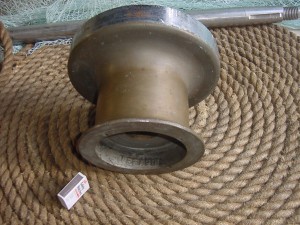
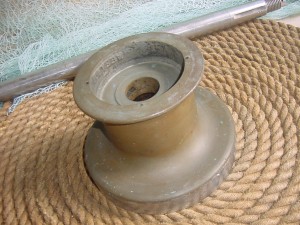
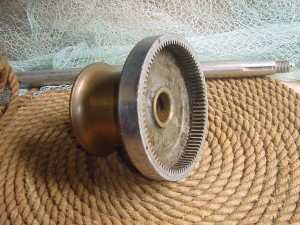
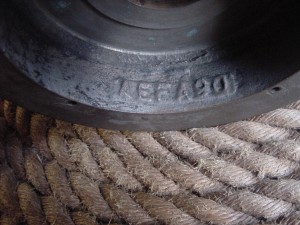
— David DeWitt
I am pleased to welcome Author Richard Schulz to The Errol Flynn Blog. We look forward to your posts and comments, Rick!
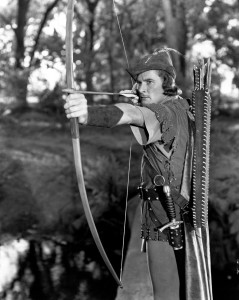
— David DeWitt
If you would like to see Errol Flynn’s grandson Sean Flynn on stage live in his first play, go see RUMORS, in Santa Monica, California for the next three weeks. I have seen a clip from it taken by Rory Flynn on opening night. Sean is so natural on stage, and does a great job!
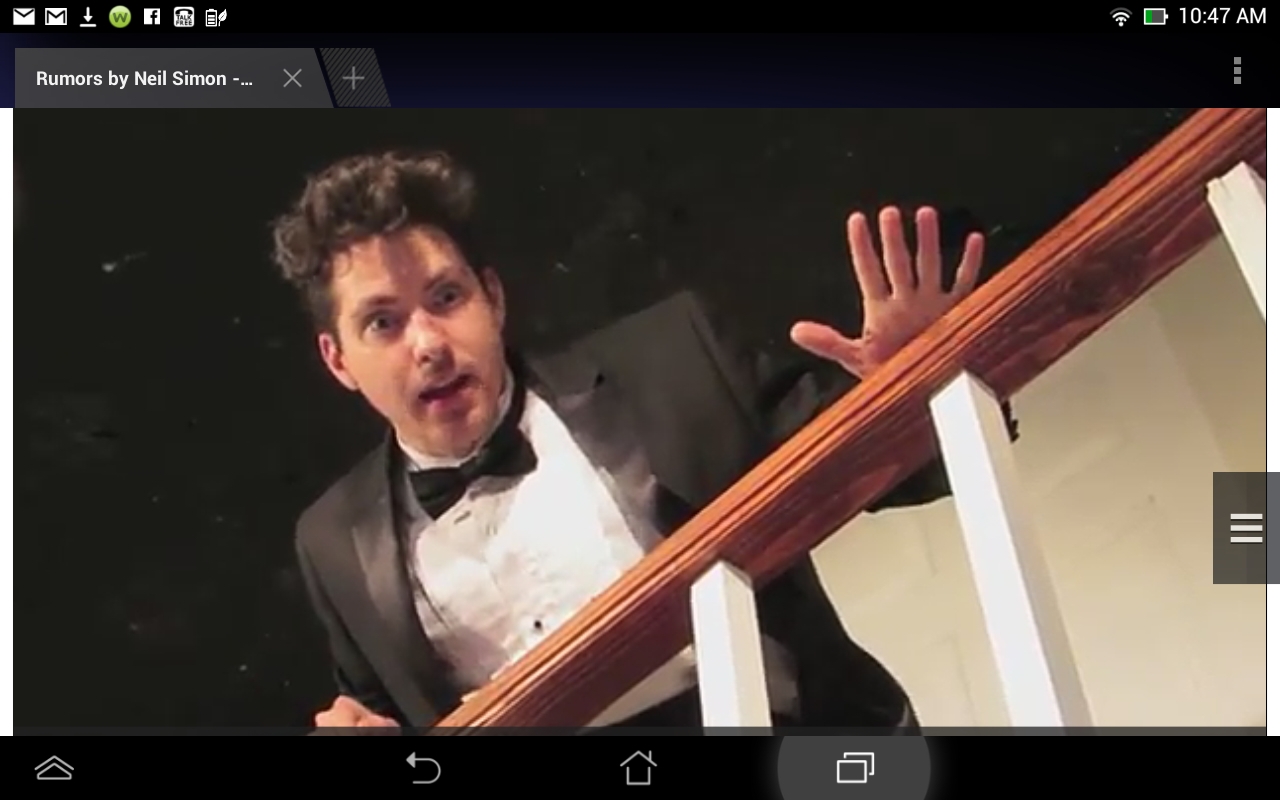 Ou
Ou
our Author Zacal notes the play is in Hollywood, not Santa Monica! Thanks for the head’s up!
— David DeWitt
Rock-itt Readers,
The November issue of The Rock-itt Magazine is now online. Click on the link to start reading the latest in music, entertainment, sport and animal rights. Cheers! Pete!
— David DeWitt